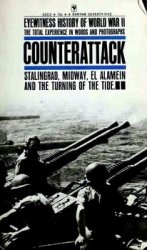The Russia of this period was a restless conglomeration of independent and semi-independent republics and principalities that, in the period from 1228 to 1462, were the scene of some 40 punitive Tartar expeditions, 90 dynastic wars and 80 invasions by Lithuanians, Poles, Teutonic Knights and Swedes. Amidst this endless turmoil, during the early part of the 14th century the Duchy of Muscovy began to replace strife-torn Vladimir as the country’s political centre, managing to achieve ascendancy over all its rivals by aligning itself with the Golden Horde, which ensured the support of Mongol troops in its campaigns. Although Muscovy was thereby obliged to acknowledge its status as a tributary of the Golden Horde, relations between the Khan and Moscow’s Grand Duke were nevertheless frequently strained, often resulting in armed conflict until, on the death of Khan Ahmed in 1481, Muscovy finally proclaimed its independence. Of the other major Russian states, Cherginov, Novgorod-Seversk, Kiev, Galicia and Smolensk were all satellites of or subject to the Lithuanian crown for much of this period. The huge territory of the Republic of Novgorod, of which Contarini wrote that it ‘might raise a large army, but the men are worthless’, became subject to Muscovy in 1471.
Although a general levy was available it was only possible to raise it in times of national emergency (Dmitri Donskoi used it to raise the army that fought at Kulikovo in 1380, for instance, as did Vasili I in the face of Tamerlane’s invasion of 1395). This was because it required the willing co-operation of the nobility and a plethora of lesser princes in order to be effective, which co-operation was not generally forthcoming. For localised wars, therefore, the Grand Duke was obliged to depend on his own retinue, the dvor or court, which by this period was comprised of ducal retainers who received lands, hereditary by c.1340, in exchange for their service either for life or for a specified length of time. The nature of such land-grants changed somewhat in the latter part of this period (after the annexation of Novgorod), when they were no longer recognised as privately-owned land, but rather as state-owned with the holder being installed as a landlord. These grants were known as pomestiia, and the holder was called a pomestnik, or pomeschik. The dvor was expanded considerably from the end of the 14th century onwards, particularly during and after the reign of Vasili II (1425-62), who probably had about 5,000 dvoriane by the end of his reign. In fact, by this date it had in effect become a standing cavalry army, commanded by its quartermaster-general {okolnichi, a post of Mongol origin first mentioned in Muscovy in 1350/1). Other senior posts in the dvor were those of dvorskii (major-domo) and master of the stables, the latter being held by a military officer who was responsible for the ducal stables, for horse-breeding, and supplying the army’s horses.
The dvoriane and the Deti Boyarskie (‘Boyar Sons’, lesser retainers posted in the towns of the duchy) inevitably provided the nucleus of the Muscovite army, but in the field they were normally backed up by the retinues of the Grand Duke’s brothers (who were liable to provide such service whenever called upon), plus vassal princes and the Muscovite boyars’ own dvors, which could be considerable (two in Dmitri Donskoi’s service in 1382 had retinues of as many as 1,700 and 1,300 men). All of these were cavalry, infantry being provided by city militias (only rarely including the rural peasantry) and cossacks, about whom more will be said below. The city militia or Veche, however, had declined considerably in the wake of the 13th century Mongol invasion, and was no longer of the same importance as it had once been, so that the post of Tysiatsky (commander of the militia — see Armies of Feudal Europe) was actually left vacant on the death of its last holder, Vasili Veliaminov, in 1374. The civic militia, now under the control of the okolnichi.
Underwent something of a revival under Vasili II and Ivan III (i. e. in the period 1425-1505), often being called up for frontier duty and siege-work. The decimal organisation set out in Armies of Feudal Europe appears to have persisted throughout this period, with units of 10, 100 and 1,000 men.
In the field the army’s commanders were traditionally chosen from among the princes and boyars according to status and seniority. The Grand Duke’s own standing troops were led by an appointed general called a voevoda (i. e. voivode) if the duke himself was not with them, while the infantry element of the army was commanded by a subordinate voivode.




 World History
World History









